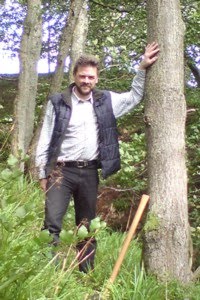 In the previous post I explained why the large Wessex style “roundhouse”
as illustrated and rebuilt is a fiction which is not supported by the
evidence. To be fair to all concerned,
it never was a “peer reviewed” idea, but like the artists reconstruction that
decorate the front of some archaeological texts, it has a far greater impact on
our collective perception of the past than any sterile rendition of the
evidence.
In the previous post I explained why the large Wessex style “roundhouse”
as illustrated and rebuilt is a fiction which is not supported by the
evidence. To be fair to all concerned,
it never was a “peer reviewed” idea, but like the artists reconstruction that
decorate the front of some archaeological texts, it has a far greater impact on
our collective perception of the past than any sterile rendition of the
evidence.
The problem is that Roundhouses are more than just infotainment, a bit of
harmless hokum for Joe Public, they are taken seriously, not only by those who
commission and build them, but also by academics, and even fellow
archaeologists who are obliged to shape their reports around this simplistic
construct. While dumbing down the academic system lightens everybody’s load, it is not good for the long term
mental health of the profession, who have responsibility with ‘doing’ the day
to day archaeology. We like to think what we do is meaningful, making a contribution, and that we are collectively getting somewhere, it is about the only reward you will get.
As a field archaeologist, writing up sites, I had realised
that the simplistic roundhouse only made sense if ignored a lot of the actual evidence
from these structures, and, the majority of the structural features from
elsewhere on the site. Furthermore,
those aspects of the evidence that reflected the archaeology of other published
sites [roundhouses] were deemed particularly significant, reinforcing the cycle
of belief. Thus, apart from square four
post granaries, circles are generally the only acceptable shape for a
prehistoric buildings; both excavation and post-excavation were approached with
same expectation, and to some extent purpose, of finding roundhouses.
.jpg)



















